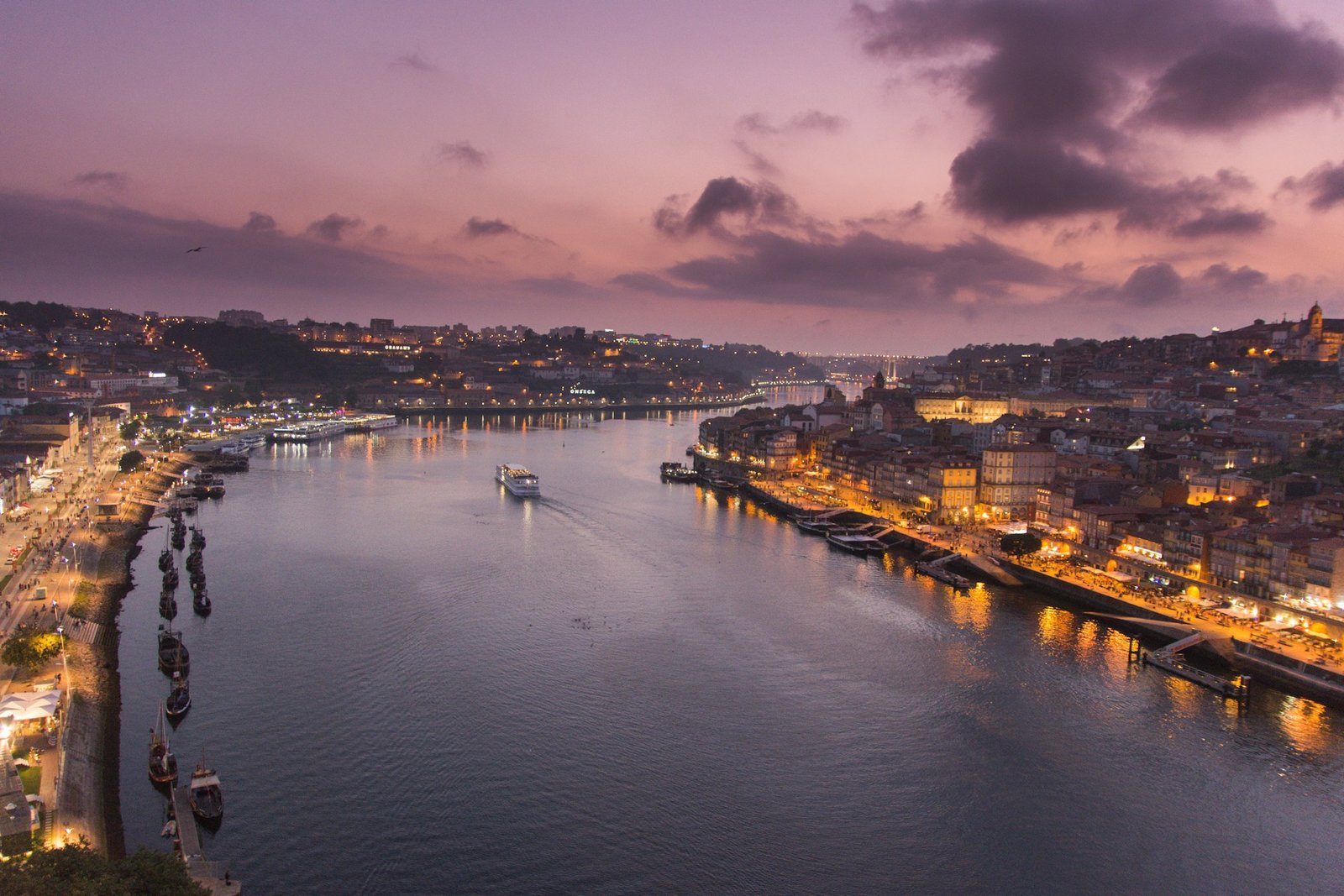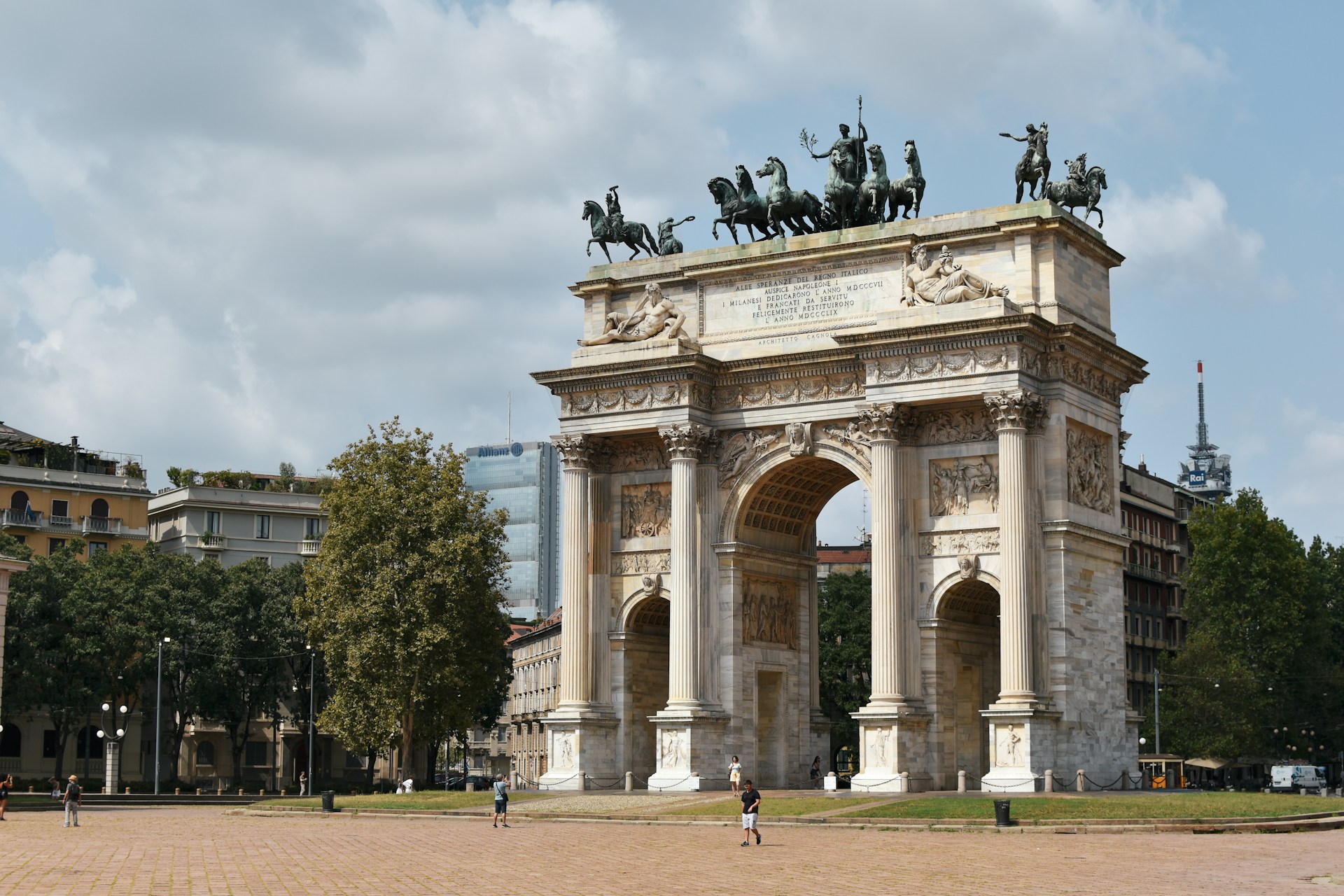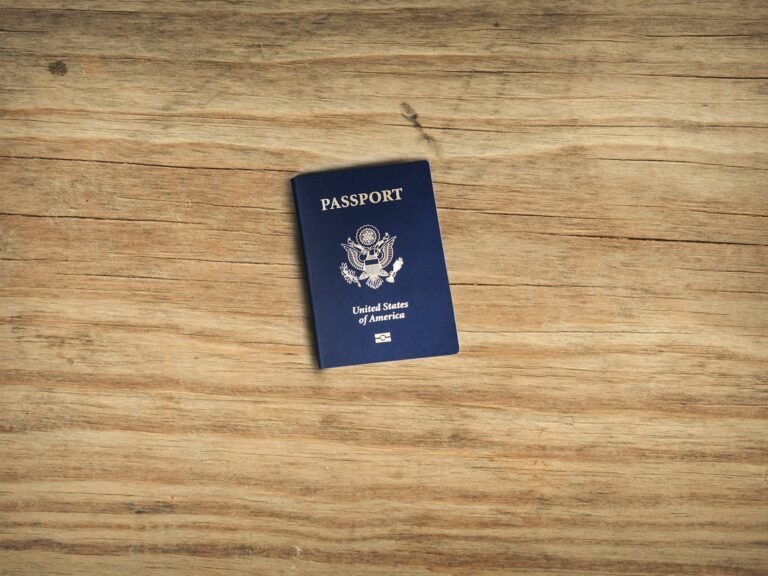
I was sitting in a cramped Barcelona office three years ago, drowning in spreadsheets and deadlines, when I impulsively booked a €15 RyanAir flight to Porto for the weekend. My coworkers thought I was slightly unhinged. “You’re flying to another country for just two days? With no hotel booked? In February?”
But that spontaneous €80 weekend—including flights, a charming guesthouse, enough port wine to float a small vessel, and several embarrassing attempts to speak Portuguese—changed everything. It showed me that European mini-adventures don’t require trust funds or elaborate planning, just a willingness to embrace the art of the budget weekend escape.
Since then, I’ve become something of an evangelist for the sub-$200 European weekend. Not the “sleeping in train stations and subsisting on stolen hotel breakfast rolls” kind of budget travel we did in our early 20s, but proper, comfortable, occasionally even slightly sophisticated getaways that don’t demolish your bank account.
The secret? Europe’s smaller cities and less Instagram-famous towns offer all the charm of their A-list counterparts without the price tag or crowds. And honestly, bragging about your incredible weekend in Brno hits different than posting yet another Eiffel Tower selfie.
The Budget Weekend Revolution: Europe on a Shoestring
The pandemic changed how we travel. With remote work now mainstream and flight deals appearing daily, the quick European getaway has become less about luxury and more about smart opportunism. Budget airlines have transformed cities once considered remote into viable weekend destinations. Meanwhile, off-season travel has shed its dreary reputation as travelers discover the authentic charm of places without the summer crowds—and prices.
For Americans using Europe as their playground, the strength of the dollar has created unprecedented opportunities. For Europeans themselves, the explosion of budget travel options means weekend adventures are increasingly replacing costly annual vacations. We’re all becoming weekend warriors, collecting experiences rather than souvenirs.
Defining the $200 Challenge
Let’s be crystal clear about what we’re attempting here. That $150 needs to cover:
- Transportation to and from your destination
- Two nights of accommodation
- Basic food and essential experiences
- Local transportation if necessary
Is it ambitious? Absolutely. Impossible? Not at all—if you know where to look.
Why Budget Weekend Getaways in Europe Still Exist (Despite What You’ve Heard)
You’ve seen the headlines: “Europe Too Expensive!” “Tourism Crushing Historic Cities!” “€7 Coffees in Venice!” And yes, try planning a spontaneous July weekend in Santorini or Paris and you’ll need to remortgage your flat. But Europe is vast, varied, and still surprisingly affordable if you know where to look.
The continent’s recent tourism struggles have actually created opportunities. Many smaller European cities have improved their tourism infrastructure while keeping prices reasonable to attract visitors away from overcrowded hotspots. Meanwhile, budget airlines keep launching new routes to regional airports desperate for traffic.
This sweet spot—improved facilities in less-visited places with affordable transportation options—is your ticket to weekends that feel luxurious without the luxury price tag.
The Math Behind the $200 Weekend
Let’s break down how this actually works:
- Flights: €30-80 return (if booked during sales and flying at less popular times)
- Accommodation: €50-80 per night (budget boutique hotels or quality private rooms on Airbnb)
- Food & Drink: €30-50 per day (mixing local cafés with one nicer meal)
- Activities: €0-30 (focusing on free cultural sites, affordable museums, and walking)
- Local Transport: €5-15 total (many smaller cities are walkable)
That’s roughly €150-180 for a transformative 48 hours somewhere new. The equivalent of a forgettable dinner and theater ticket in London or New York buys you an entire weekend of memories elsewhere.
The European Cities Where Your $200 Goes Furthest
1. Porto, Portugal: The Colorful Bargain

Porto remains the gold standard for affordable European charm. The faded grandeur of its riverside district, hills dotted with ceramic-tiled buildings in sherbet colors, and wine cellars offering €5 tastings create a sensory feast that feels like it should cost far more.
My private room in a family-run guesthouse near Clérigos Tower cost €35 per night, including a breakfast spread that featured homemade cakes so delicious I’m still thinking about them years later. Dinner for two with wine at riverside restaurants rarely topped €40 total.
Don’t miss: The Livraria Lello, a neo-Gothic bookshop so magical it supposedly inspired aspects of Harry Potter (though this connection is somewhat overstated by locals). The €5 entry fee is redeemable against book purchases.
2. Kraków, Poland: Medieval Magic on a Shoestring
While Warsaw gets business travelers, Kraków attracts budget-conscious culture vultures with its intact medieval core, fascinating Jewish quarter, and prices that make Western Europeans weep with joy.
My mistake here was overthinking accommodation. I booked a bland hotel near the train station for €40, only to discover later that the same money could have secured a characterful apartment in a 16th-century building in the old town. Still, with main dishes at traditional Polish restaurants hovering around €8 and museum entries rarely exceeding €5, my Kraków weekend came in at approximately €170 total.
Local secret: The Podgórze district across the river is where young Krakovians are opening hip cafés and bars in former factory spaces. Prices here are even lower than the center, with craft beers around €3.
3. Bologna, Italy: Gourmet Heaven Without the Gouging
Insert image: Fresh pasta being made by hand in Bologna window display

Italy seems an unlikely candidate for budget travel, but Bologna—sandwiched between pricier Florence and Venice—offers authentic Italian experiences without the markup. The city’s nickname is “La Grassa” (The Fat One) for its food culture, and eating well here is both mandatory and affordable.
At a worker’s lunch spot near the university, I had the best tagliatelle al ragù of my life for €9, surrounded by Italian students and zero tourists. The city’s famous porticoes provide 40km of covered walkways, making it perfect for cost-free exploring even in rain. And unlike Florence or Rome, most of Bologna’s architectural treasures can be admired without entrance fees.
Budget hack: The Quadrilatero market district seems touristy but locals still shop here. Buy picnic supplies from the vendors and take them to Giardini Margherita for lunch.
4. Split, Croatia: Coastal Luxury at Inland Prices
Croatia’s coast has gotten pricey in summer, but shoulder season (April-May, September-October) in Split offers Mediterranean magic without Riviera costs. The city’s ancient core is built within the walls of Diocletian’s Palace, meaning your budget accommodation puts you inside a living Roman monument.
I visited in early October, paying €45 nightly for a stone-walled apartment and enjoying beaches empty enough to feel private. Seafood that would cost €30+ on the Italian coast was €12-15 here. The weather was still warm enough for swimming, though evenings required a light jacket.
Smart splurge: Take the public ferry to nearby islands like Brač (€8 round trip) rather than expensive private boat tours. Pack a picnic and spend a day at Zlatni Rat beach for virtually no cost.
How to Book the Sub-$200 Weekend
The Flight Formula
The flight typically eats the biggest chunk of your budget, so getting this right matters. My strategy:
- Start with Skyscanner or Google Flights using the “Everywhere” destination option for your dates
- Focus on flights under 3 hours (maximizes your ground time)
- Consider departing Thursday evening/Friday morning and returning Sunday night/Monday morning for better rates
- Check if budget airlines not on major search engines (like Wizzair) fly your route
- Factor in airport transfer costs—some budget airports are actually in different countries than the cities they supposedly serve (I’m looking at you, “Stockholm” Skavsta)
I’ve found Tuesday afternoons and Wednesday mornings are often when new flight sales drop. Set fare alerts for potential destinations and be ready to book immediately when deals appear.
Accommodation Approach
Insert image: Cozy apartment window with coffee cup and European street view

For weekend trips, location trumps luxury. You need accommodation that:
- Is centrally located (saves time and transport costs)
- Includes breakfast or has kitchen facilities
- Has early check-in/late check-out or luggage storage
- Offers character over generic comfort
I’ve had my best experiences with:
- Family-run guesthouses through Booking.com (filter for 8+ rating and free cancellation)
- Private rooms in hostels via Hostelworld (often with ensuite bathrooms and more character than budget hotels)
- Airbnb apartments in historic buildings (check for Superhosts and 15+ reviews)
My biggest accommodation disaster turned travel story: A last-minute Budapest weekend where my €30/night “boutique guesthouse” turned out to be a retired opera singer’s spare bedroom. She didn’t speak English but insisted on performing arias while making me breakfast. Terrifying at first, hilarious in retrospect, and a reminder that authentic experiences sometimes come from booking mishaps.
The Art of the €30 Day
Once your flight and accommodation are sorted, keeping daily costs under €30-40 requires strategy, not suffering. My approach:
Morning: Café Culture & Free Sights
European café culture is the budget traveler’s friend. A leisurely coffee and pastry rarely exceeds €5 even in atmospheric historic cafés, and buys you people-watching and local atmosphere. Follow with self-guided walking tours or free museum hours (many European museums have specific days/times with no entry fee).
Afternoon: Picnic Perfection
European market culture makes lunch your budget opportunity. Assemble a dream picnic for €10 that would cost triple in a restaurant: local cheeses, cured meats, fresh bread, wine. Take it to a park, riverbank, or scenic square.
Evening: Strategic Splurging
Rather than three mediocre budget meals daily, I save for one excellent everyday experience—like a traditional dinner that’s still half what you’d pay at home.
My best €25 meal was in Lisbon, where a tiny family restaurant served grilled sardines, house wine, and crema catalana so good I briefly considered missing my flight to order seconds.
| Meal | Budget Approach | Splurge Approach |
| Breakfast | Free hotel breakfast or local bakery (€3-5) | Historic café with specialty coffee (€7-10) |
| Lunch | Market picnic or street food (€5-8) | Set lunch menu at nice restaurant (€12-20) |
| Dinner | Grocery store meal or casual eatery (€8-12) | Local specialties at authentic restaurant (€15-25) |
| Drinks | House wine/local beer with meal (€3-5) | Craft cocktail or wine flight (€8-15) |
Seven Underrated European Destinations Where $200 Still Works
1. Riga, Latvia: Baltic Beauty on a Budget
Riga’s fantastical Art Nouveau architecture rivals Barcelona’s, but with hotel rooms at a third of the price. The compact center pairs wooden houses with striking early 20th-century buildings, while the central market housed in zeppelin hangars offers world-class people-watching and snacking opportunities.
I spent €160 total for a weekend here, including a €35 splurge on dinner at 3 Pavāru Restorāns, where local chefs are reinventing Baltic cuisine.
2. Brno, Czech Republic: Prague’s Cooler Cousin
While Prague struggles with overtourism, Czech Republic’s second city Brno offers similar architecture, better beer culture, and prices straight from 2005. The city’s underground tunnel network, functionalist architecture, and vibrant café scene attract design enthusiasts and budget travelers alike.
My highlight: Spending €4 on entry to 10-Z Bunker, a Cold War nuclear shelter turned museum/bar where you can sample Czech beers in former military quarters.
3. Thessaloniki, Greece: Mediterranean Vibes Without Mykonos Prices
Greece doesn’t have to mean costly islands. Thessaloniki offers seaside promenades, Byzantine churches, Ottoman bathhouses, and vibrant food markets at mainland prices. The student population keeps the bar scene affordable and lively.
Budget win: The upper town district of Ano Poli has the best views and the most affordable tavernas, where €15 buys dinner with wine and mezze plates to share.
4. Valencia, Spain: Sunshine Without the Barcelona Markup
Spain’s third-largest city delivers Mediterranean beaches, cutting-edge architecture, historic neighborhoods, and the country’s best paella at prices well below Madrid or Barcelona. The city converted its riverbed into a stunning park that snakes through the center, providing miles of free recreation.
Smart stay: The Ruzafa neighborhood offers colorful streets with rooms around €50 and the city’s hippest cafés and bars.
5. Ghent, Belgium: Medieval without the Bruges Crowds
Ghent gives you everything travelers love about Bruges—medieval architecture, canal views, Belgian beer—with fewer tourists and more authentic atmosphere thanks to its large student population.
My €4 boat tour run by local students provided both city history and insider tips on which pubs serve which Trappist beers at the best prices. The Patershol district offers ancient streets with surprisingly affordable restaurants.
6. Ljubljana, Slovenia: Alpine Charm at Eastern European Prices
Slovenia’s capital pairs Central European aesthetics with Balkan pricing. The car-free center, dragon-decorated bridges, and castle-topped hill create storybook scenes, while the surrounding country’s small size means you can take half-day trips to Lake Bled or wine country without blowing your budget.
Local hack: The Open Kitchen Market (Odprta Kuhna) on Fridays offers restaurant-quality food at street vendor prices—the perfect way to sample Slovenian cuisine affordably.
7. Palermo, Sicily: Raw Urban Energy with Incredible Food
Sicily’s capital brings African, Arab, Norman, and Italian influences together in a gloriously chaotic urban experience. The street markets burst with sensory overload, while hidden Norman palaces and Byzantine mosaics provide cultural counterpoints.
My most memorable meal cost €7 at Antica Focacceria San Francesco, a historic spot serving spleen sandwiches (tastier than they sound) and paper cones of fresh fritti.
The Joy of the Imperfect Weekend
The beauty of the budget weekend isn’t just financial—it’s philosophical. When you’ve invested hundreds or thousands in a “dream vacation,” every minor disappointment feels magnified. The €50 meal that’s merely good rather than transformative. The rainy day that ruins beach plans. The museum closed for renovation.
But a $200 weekend has built-in resilience. That mediocre meal becomes a funny story. The rain drives you into a local bar where you chat with residents. The closed museum leads you to discover an overlooked church with staggering art.
My final night in Porto, I got hopelessly lost trying to find a recommended restaurant. After 40 minutes of increasingly hungry wandering through steep cobblestone streets, I gave up and entered the next place I passed—a tiny unmarked door leading to what seemed to be someone’s living room with four tables. The elderly owner spoke no English but brought me whatever she was cooking: grilled sardines, boiled potatoes with olive oil, and a carafe of homemade wine.
The bill was €12. The memory remains priceless.
In our Instagram-perfect travel culture, we’ve forgotten that the messy, imperfect journeys often become our favorite stories. The $200 weekend embraces this philosophy—stretching both your money and your comfort zone just enough to create something memorable.
Your European mini-adventure is waiting. Pack light, book that random flight, and create your own story for less than you’d spend on a fancy dinner at home.
FAQ: Budget Weekend Getaways in Europe
What are the cheapest European cities for weekend breaks?
Eastern European cities like Kraków, Budapest, and Riga consistently offer the best value, with Western European bargains including Porto, Valencia, and Bologna. Prices are typically 30-50% lower than in major capitals.
When is the best time to book budget flights to Europe?
Book 2-3 months ahead for the best balance of availability and price. Tuesday afternoons often see new sales launched, and flying midweek (Tuesday/Wednesday) is typically 20-40% cheaper than weekend flights.
How can I find affordable accommodation in Europe?
Look beyond major booking sites to hostel private rooms, university summer accommodations, and locally-owned guesthouses. Consider neighborhoods just outside tourist centers—often a 10-minute walk saves 30% on room rates.
Is it possible to visit Western European cities on a $200 budget?
Yes, but timing matters. Visit cities like Lisbon, Porto, and Valencia in late fall or winter when tourism drops but weather remains mild. Many Western European cities offer free museum days and affordable set lunch menus that make budget travel possible.
What’s the best way to get around European cities cheaply?
Many European cities are compact enough for walking. For longer distances, look for visitor transport passes (often including museum entries) or bike-share programs, which typically cost €8-15 for weekend access.
How can I avoid tourist traps and find authentic affordable restaurants?
The “one street back” rule works well—restaurants one street away from major attractions often charge 30-40% less. Also look for places with menus only in the local language and lunch specials advertised for workers.
Which budget airlines are best for European weekend travel?
Ryanair, EasyJet, Wizzair, and Vueling offer the most extensive European route networks. Each has different baggage policies and airport locations—check total costs including transportation to/from airports when comparing.
Is it cheaper to book flights and hotels separately or as packages?
For weekend trips, separate bookings usually offer better value and flexibility. Package deals often include unwanted extras or use hotels in inconvenient locations. The exception is last-minute packages (within 2 weeks of travel), which can offer genuine bargains.
How much should I budget per day for food in affordable European cities?
In Eastern Europe and parts of Southern Europe, €25-35 daily covers comfortable eating (including one nicer meal). In Western Europe, aim for €40-50 by mixing picnic lunches with one restaurant meal daily.
Are European museum passes worth it for weekend trips?
City cards offering museum entries and transportation are rarely worth it for short trips unless you plan intensive sightseeing. Instead, research free entry times or focus on 1-2 must-visit museums and enjoy free cultural experiences for the rest.
Top Recommendations for Budget European Weekends
Flight Finding Tools
- Skyscanner – Set up price alerts and use the “Everywhere” search function to find unexpected budget destinations based on your departure city
- Secret Flying – Publishes error fares and flash sales that can drop round-trip flights to Europe below €50
- Kiwi.com – Offers “nomad” search that combines budget airlines for routes they don’t officially serve together
Accommodation Options
- Hostelworld – Filter for private rooms to find hostel accommodations with more character and social opportunities than budget hotels
- St. Christopher’s Inns – European hostel chain with private rooms above lively bars in central locations
- Couchsurfing – Free accommodation with locals; particularly good in Eastern European cities where hosts are still enthusiastic
Transportation Services
- BlaBlaCar – Ridesharing platform popular in Europe for affordable intercity travel
- Omio – Compares trains, buses and flights for the best combination of price and travel time
- Citymapper – More accurate than Google Maps for European public transportation options
Food & Drink Experiences
- WithLocals – Food tours and home dining experiences starting around €25
- Eatwith – Supper clubs and cooking classes in local homes, often cheaper than restaurant meals
- The Fork – Europe’s version of OpenTable with special 50% off deals at restaurants trying to fill empty tables
Budget Activity Booking
- GetYourGuide – Often runs promotions like 2-for-1 on walking tours
- Civitatis – Specializes in free walking tours where you pay what you wish
- GuruWalk – Platform for free walking tours run by local enthusiasts rather than professional guides
Budget Planning Tools
- Trail Wallet – Travel expense tracker that helps you stay within your €200 budget
- XE Currency – Essential for quick conversions between euros and other European currencies
- Too Good To Go – App for purchasing unsold food from restaurants and bakeries at steep discounts
- Google Maps Offline – Download city maps before arrival to avoid data charges
- Happy Cow – Find affordable vegetarian options throughout Europe







Its lije you read my mind! You seem to know a lot about
this, like you wrote the book in it or something. I think that you could do with a few pics tto
drive the message home a little bit, but instead of that, this is
wonderful blog. A fantastic read. I’ll definitely be back. http://boyarka-inform.com/
Reading this feels like standing in a quiet glade at dawn, noticing subtle light and detail. The text promotes reflection, patience, and mindful immersion, producing a serene, meditative reading experience.